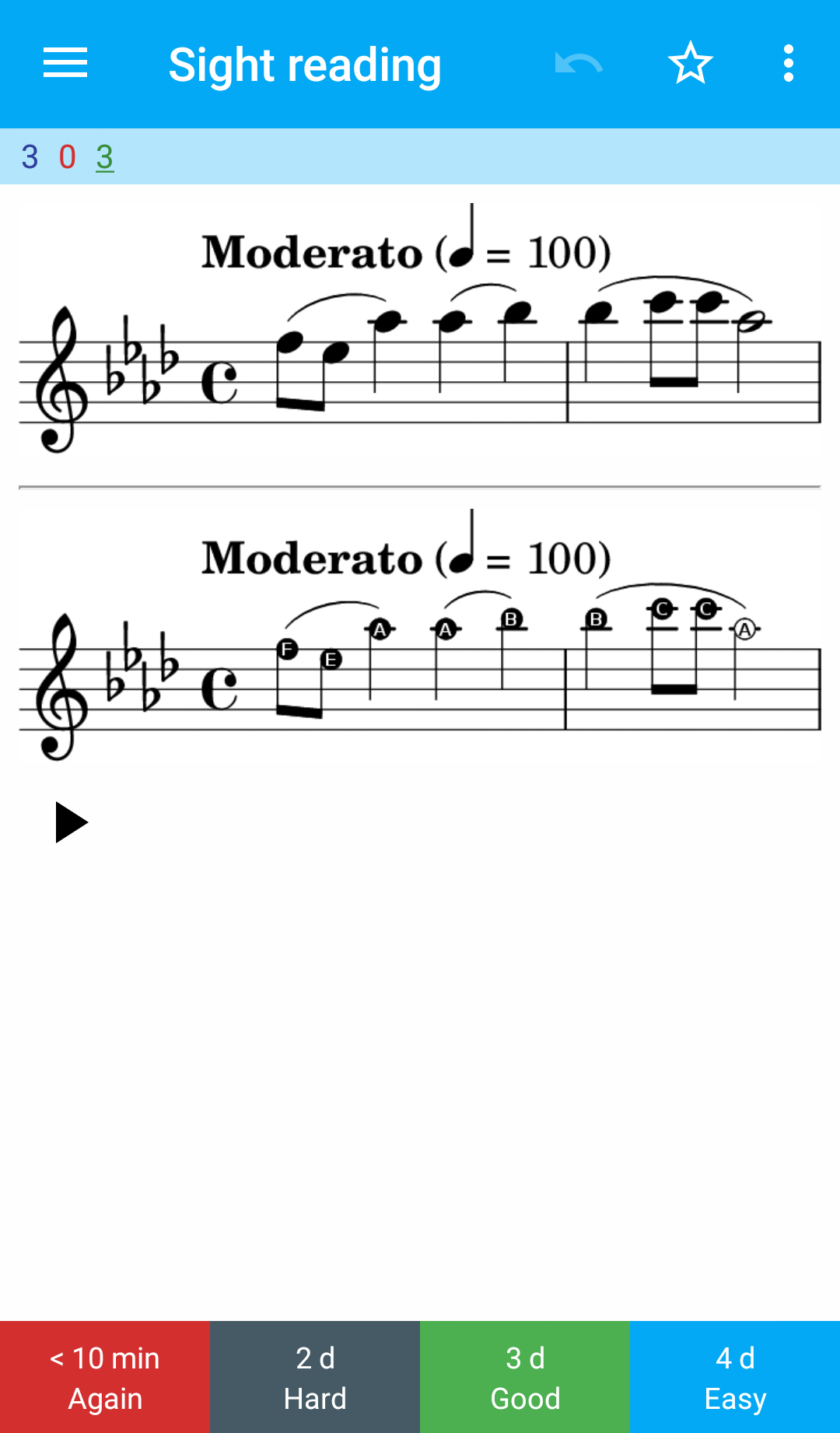This lets you write bits of music in a scheme list in a .ly file, and turn it into an Anki deck with images of sheet music and generated audio. A folder will be created with the same name as your .ly file.
./lilyToAnki.sh lilypondFileNameWithoutExtension
The output when run is a .apkg file you can import into Anki.
Lilypond, Timidity, and the python3 modules genanki and natsort.
lilyToAnki.sh just runs lilypond, then timidity, then anki.py in order.
The important lilypond stuff is all in cardify.ly, so put your music in another file and include cardify in it.
Here's an example of how to structure your music file to use cardify:
\include "cardify.ly"
#(define musicList (cardifyMusicList (list
#{ \relative c''' {\key aes \major aes( bes) bes( c) aes( ees) } #}
#{ \relative c''' {\key aes \major aes( bes) bes( c8 c) aes4( ees) } #})))
$@musicList
The command below generates all the images for your cards, and midi files to be used later. The folder you specify should exist before you run the command. You can leave it out, but it generates a whole mess of files. If cardify is false, all the music will be in one PDF, which is useful for making sure you entered all the music correctly.
lilypond -dpreview -e '(define cardify #t)' -o folderName aLilypondFile.ly
Anki doesn't play midi files, so install timidity and use it to convert midi to wav:
for i in *.midi; do timidity "$i" -Ow; done
anki.py uses genanki and natsort, you'll want to install those with pip.
python3 anki.py folderName
